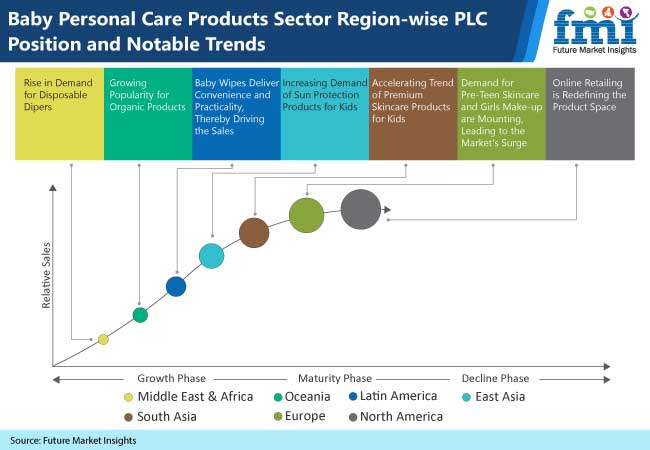The global organoid market is forecast to grow at a rapid pace for the forecast period starting from 2020 to 2030. Increasing private funding for research and development of therapeutic and diagnostic models is also one of the key factors driving market growth. Organoids are finding use in pathogenesis and regenerative medicines. With rising prevalence of cancer and liver diseases coupled with commercialization of organoid models, promising growth is on the cards for the market, finds ESOMAR-certified consulting firm Future Market Insights in this study.
According to International Federation of Pharmaceutical Manufacturers and Associations, preclinical testing requires nearly 22% of total expenditure allotted for drug discovery. Extensive research and clinical trials towards development of humanized therapeutics paved way for exponential growth of organoid market.
“Market players are focusing on employing organoid for studying organ specific cell function and cell toxicity monitoring. Organoid’s diversity in terms of application will elevate the organoid market demand,” remarks the FMI analyst.
Request a report sample with 250 pages to gain comprehensive insights at https://www.futuremarketinsights.com/reports/sample/rep-gb-8106
Key Takeaways
- The U.S. is the global leader in organoid market supported by rising application of organoid based inspection models in biotechnology domain and higher healthcare spending by customers.
- Europe is expected to grow at healthy pace during the forecast period. Rising prevalence of cancer and gastrointestinal diseases in European population drives the market growth.
- Growing investment and consistent progress in stem cell research leading to market expansion in Japan.
- Addition of study of organoid culture in university and government research centers accelerates the market growth.
- Rising popularity of epidemiology and efforts towards conserving organ specific tissue diversity drives the market growth.
Prominent Drivers
- Organoid’s morphological ability to mimic cells and create precise tissue models is driving the organoid market growth.
- Introduction of organoid will reduce the drug discovery process and expenditure further fuelling the market demand.
- Increased government investment towards research and development of organoids will magnify the market growth.
Key Restraints
- Inadequate infrastructure facilities necessary for 3D cell culture research hamper the market growth.
- Shortage of skilled professionals to run, interpret and validate research experiments restricts the market growth.
- Barriers associated with implementation of organoids in present system will negatively affect the market demand.
Discover more about the organoid market with figures and data tables, along with the table of contents. You will also find detailed market segmentation on https://www.futuremarketinsights.com/checkout/8106
Competitive Landscape
Leading players profiled by FMI operating in organoid market include Cellesce Ltd, Qgel, OcellO B.V., DefiniGEN, Hubrecht Organoid Technology (HUB), STEMCELL Technologies Inc. According to FMI, Leading players are emphasizing on enhancing their production facilities and develop new products using modern technologies to cater the rising demand of patients. For instance, Cellesce Ltd. recently launched the new patient-derived Breast Cancer organoid lines in November 2020.
They are also looking forward towards strategic collaboration to expand their product portfolio. For instance, BIOIVT collaborated with Upcyte Technologies GmbH making Upcyte Technologies GmbH exclusive global distributer of BIOIVT’s cell products and media which include liver sinusoidal endothelial cells.
More Insights on FMI’s Organoid market
The latest market study on global organoid market by Future Market Insights gives a detailed segmentation for the forecast period of 2021-2031. In order to gain a better perspective of the global market potential, its growth, trends, and opportunities, the market is segmented on the basis of product (Intestinal Organoids, Hepatic Organoids, Pancreatic Organoids, Colorectal Organoids, Neural Organoids), Application (Bio-banking, Biomedical Research and Drug Discovery, Regenerative Medicine, Cancer Research, Therapeutic Tools), End user (Biopharmaceutical Companies, Contract Research Organizations, Academics and Research Institutes) and across major regions (North America, Latin America, Europe, East Asia, South Asia and Oceania, and Middle East & Africa).
Get Access to Research Methodology Prepared by Experts>>> https://www.futuremarketinsights.com/ask-question/rep-gb-8106
Explore FMI’s Extensive Coverage on healthcare Domain
Organoid kits market: The global organoid kits market report by FMI gives an in-depth insight on the future expansion prospects, trends and challenges that market is likely to face in the upcoming decade. Key statistics regarding key segments have been presented across prominent geographies, along with a detailed assessment of the market’s competitive landscape.
Regenerative medicine market: The regenerative medicine market study published by FMI offers a comprehensive analysis and focused views on major trends expected to provide shape to future growth prospects. The report provides detailed analysis of the significant drivers, trends, challenges and opportunities prevailing for the forthcoming decade across key geographies along with competitive landscape of the upcoming decade.
Personalized medicine market: Future Market Insights gives a detailed segmentation on the global personalized medicine market with upcoming market trends, challenges and future growth dynamics across key geographies and prominent segments. The report provides a holistic approach, mapping the competitive landscape with detailed analysis on established players, new entrants, and opportunities likely to prevail across the 2021-2031 decade.
About Future Market Insights (FMI)
Future Market Insights (FMI) is a leading provider of market intelligence and consulting services, serving clients in over 150 countries. FMI is headquartered in Dubai, and has delivery centers in the UK, U.S. and India. FMI’s latest market research reports and industry analysis help businesses navigate challenges and make critical decisions with confidence and clarity amidst breakneck competition. Our customized and syndicated market research reports deliver actionable insights that drive sustainable growth. A team of expert-led analysts at FMI continuously tracks emerging trends and events in a broad range of industries to ensure that our clients prepare for the evolving needs of their consumers.
